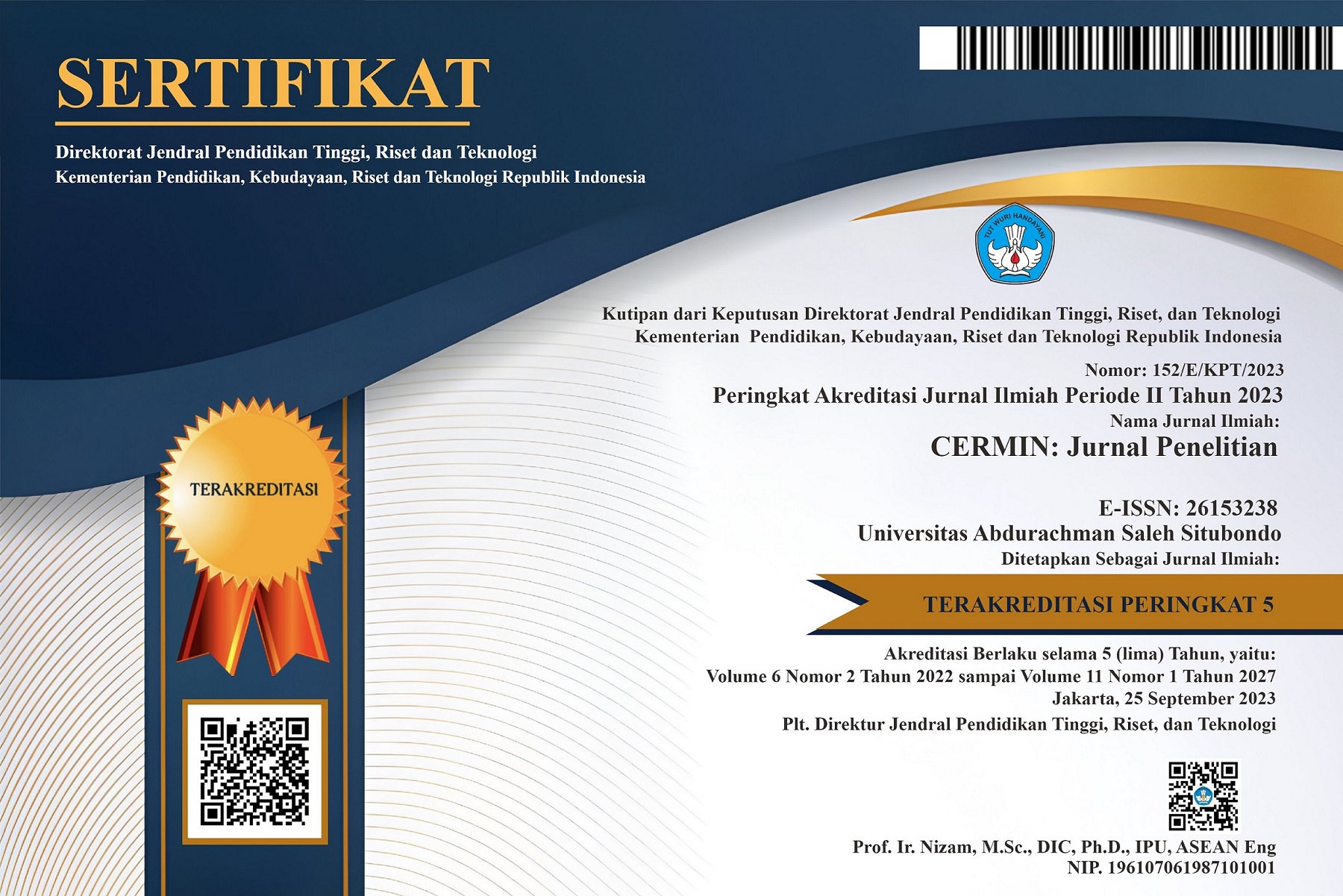REALISASI STRATEGI KESOPANAN DALAM TINDAK TUTUR DIREKTIF PADA FILM KUNGFU PANDA
Abstract
This research is pragmatic study which has a purpose to describe politeness strategies of directive speech act in Kungfu Panda movie. That movie has been watching by people including children.Therefore the use of language in that movie being an interesting matter to be analyzed. The politeness theory proposed by Brown & Levinson used to describe politeness strategy of directive utterances in Kungfu Panda movie. This research uses descriptive qualitative approach. Some methods used in this study are: first, the data are collected by using observation method. Second, the data are analyzed using Sparadley’s theory by making domain analysis, taxonomic analysis, componential analysis, and discovering cultural themes. Third, in presenting the result of data analysis uses an informal method of presentation. The result of this research showes that there are fifty four directive utterances which use politeness strategy, both positive politeness strategy and negative politeness. Positive politeness strategy used by (1) using in-group identity markers, (2) being optimistic, (3) including both speaker and hearer in the activity, (4) giving sympathy to hearer. Negative politeness strategy used by (1) being conventionally indirect, (2) being pessimistic, (3) minimising the imposition, (4) giving deference, (5) impersonalizing speaker and hearer, and the last (6) stating face threatening act as a general rule.
Downloads
Abstract
This research is pragmatic study which has a purpose to describe politeness strategies of directive speech act in Kungfu Panda movie. That movie has been watching by people including children.Therefore the use of language in that movie being an interesting matter to be analyzed. The politeness theory proposed by Brown & Levinson used to describe politeness strategy of directive utterances in Kungfu Panda movie. This research uses descriptive qualitative approach. Some methods used in this study are: first, the data are collected by using observation method. Second, the data are analyzed using Sparadley’s theory by making domain analysis, taxonomic analysis, componential analysis, and discovering cultural themes. Third, in presenting the result of data analysis uses an informal method of presentation. The result of this research showes that there are fifty four directive utterances which use politeness strategy, both positive politeness strategy and negative politeness. Positive politeness strategy used by (1) using in-group identity markers, (2) being optimistic, (3) including both speaker and hearer in the activity, (4) giving sympathy to hearer. Negative politeness strategy used by (1) being conventionally indirect, (2) being pessimistic, (3) minimising the imposition, (4) giving deference, (5) impersonalizing speaker and hearer, and the last (6) stating face threatening act as a general rule.
References
Austin, J.L. 1962. How to Do Things with Words. Oxford: Oxford University Press.
Brown, Penelope and Stephen C. Levinson. 1987.Politeness: Some Universals in Language Use. Cambridge: Cambridge University Press.
Cummings, Louise. 1999. Pragmatik Sebuah Perspektif Multidisipliner (diterjemahkan oleh Eti Setiawati, dkk). Yogyakarta: Pustaka Pelajar.
Finegan, Edward, Niko Besnier, David Blair, dan Peter Collins. 1992. Language It’s Structure and Use. Marrickville: Harcourt Brace Jovanovich Group(Australia) Pty Ltd.
Gunarwan, Asim. 1994. “Kesantunan Negatif di Kalangan Dwibahasawan Indonesia-Jawa di Jakarta: Kajian Sosiopragmatik†dalam PELlba 7: Pertemuan Linguistik Lembaga Bahasa Atma Jaya: Ketujuh. Yogyakarta: Penerbit Kanisius.
Leech, Geoffrey. 1993. Prinsip-prinsip Pragmatik (diterjemahkan oleh M.D.D. Oka dan Setyadi Setyapranata). Jakarta: Penerbit Universitas Indonesia.
Mahsun. 2005. Metode Penelitian Bahasa: Tahapan Strategi, Metode, dan Tekniknya.Jakarta: PT. Raja Grafindo Persada.
Nadar, F.X.2009. Pragmatik dan Penelitian Pragmatik. Yogyakarta: Graha Ilmu.
Nurul ‘Aini, Mayasita. 2012. “Tindak Tutur Direktif Bahasa Inggris dalam Transkrip Dialog Film Nanny Mcphee (Kajian Pragmatik). Tesis. Yogyakarta: Universitas Gadjah Mada.
Purnawan, Ayup. 2009. “Tuturan Direktif dalam Al-Qur’an (Kajian Pragmatik terhadap Ayat-Ayat Hukum)â€. Tesis. Yogyakarta: Universitas Gadjah Mada.
Searle, John R. 1979. Expression and Meaning. Cambridge: Cambridge University Press.
___________ dan Daniel Vanderveken. 1985. Foundations of Illocutionary Logic. Cambridge: Cambridge University Press.
Spradley, J.P. 1980. Participant Observation. New York: Holt, Rinehart and Winston.
Subroto, Edi.2007. Pengantar Metode Penelitian Linguistik Struktural. Surakarta: LPP UNS dan UNS Press.
Sudaryanto. 1993. Metode dan Aneka Teknik Analisis Bahasa: Pengantar Penelitian Wahana Kebudayaan secara Linguistis. Yogyakarta: Duta Wacana University Press.
Sumarsih, Nanik. 2012.“Tuturan Direktif Remaja dalam Media: Studi Kasus pada Surat Pembaca Majalah Hai dan Kawankuâ€. Tesis. Yogyakarta: Universitas Gadjah Mada.
Wijana, I Dewa Putu. 1996. Dasar-Dasar Pragmatik. Yogyakarta: Penerbit Andi.
Yule, George. 1996. Pragmatik (diterjemahkan oleh Indah Fajar Wahyuni). Yogyakarta: Pustaka Pelajar.











